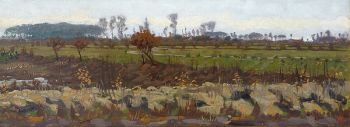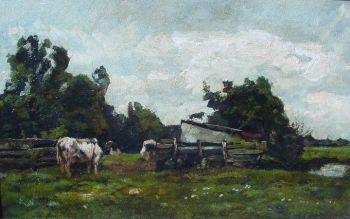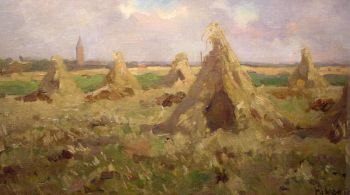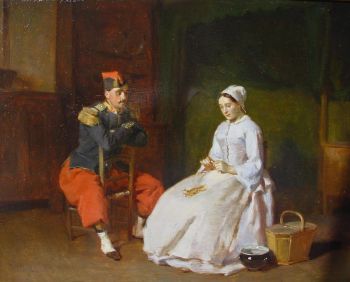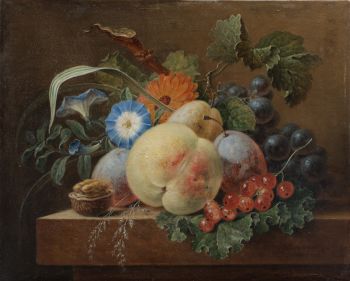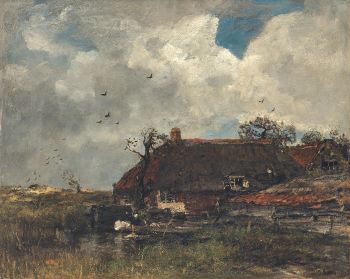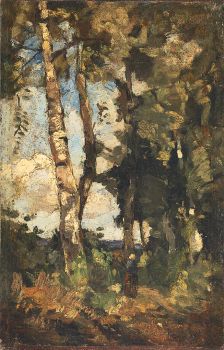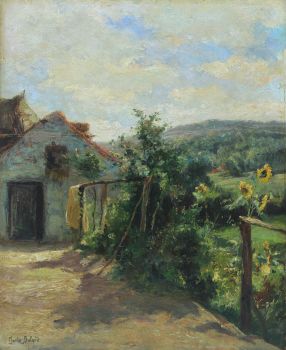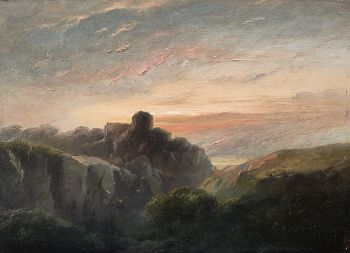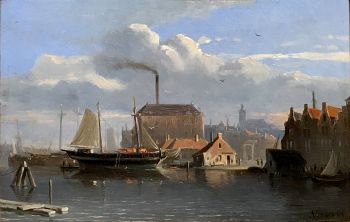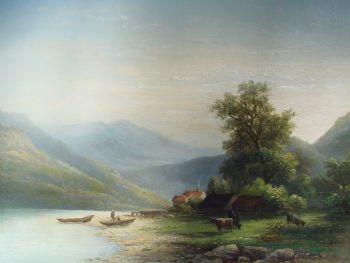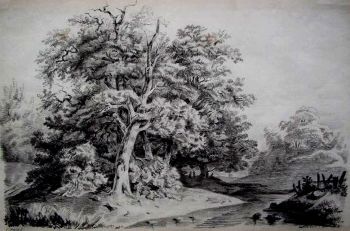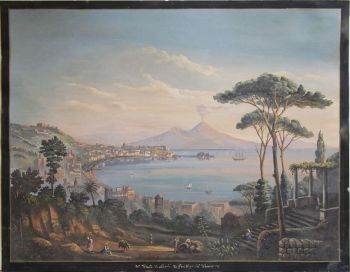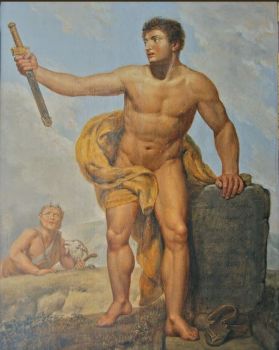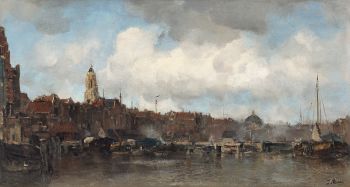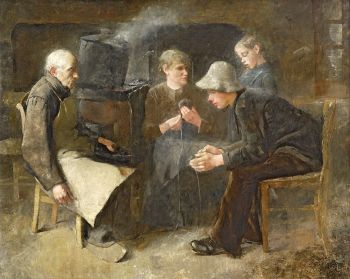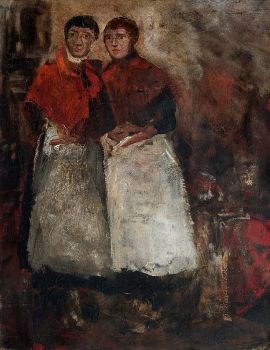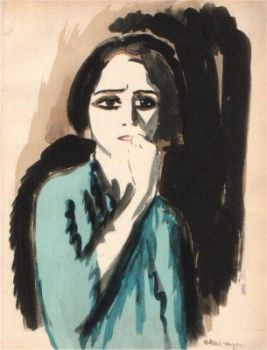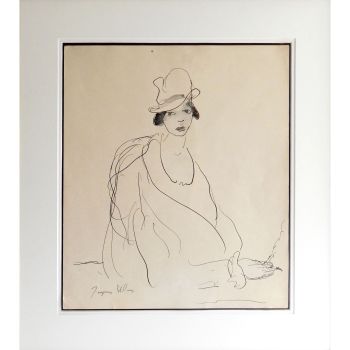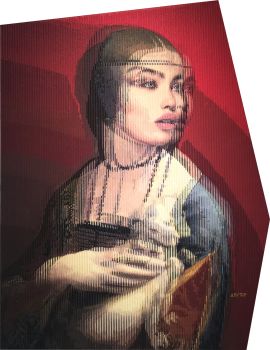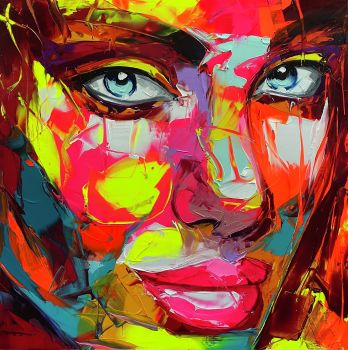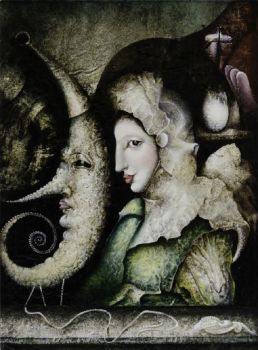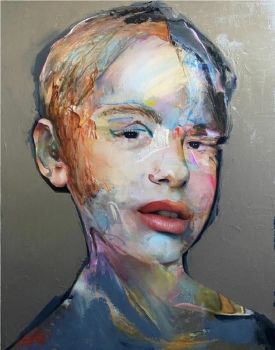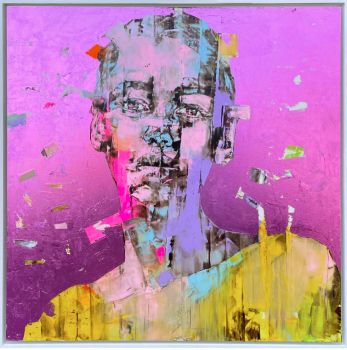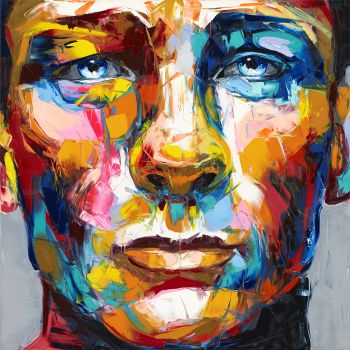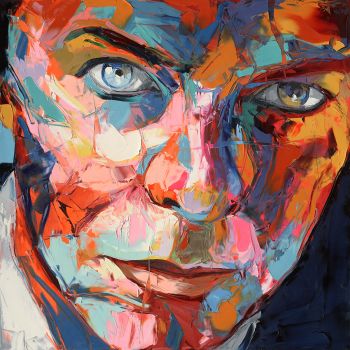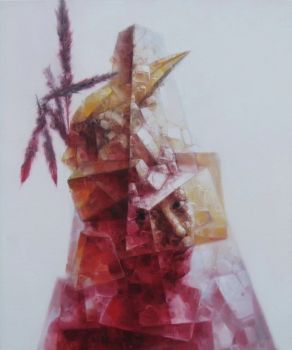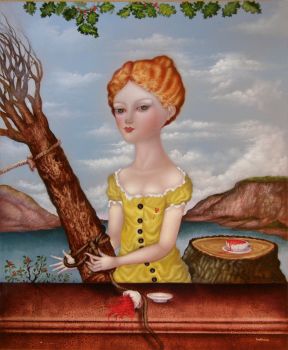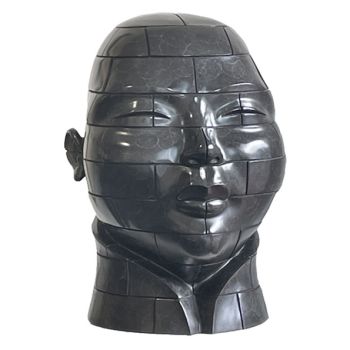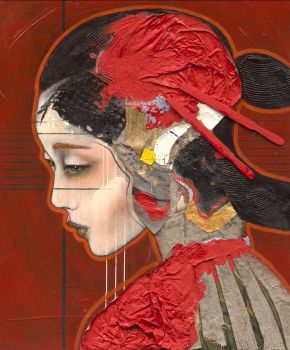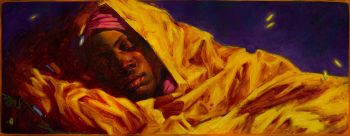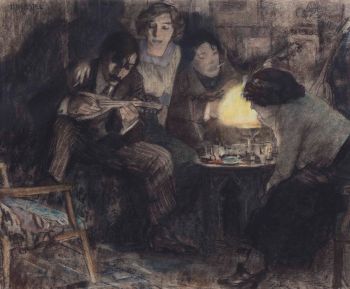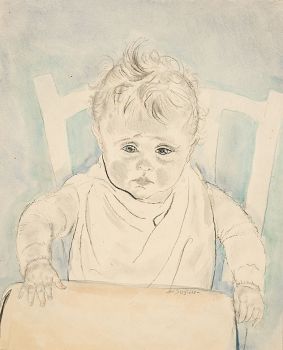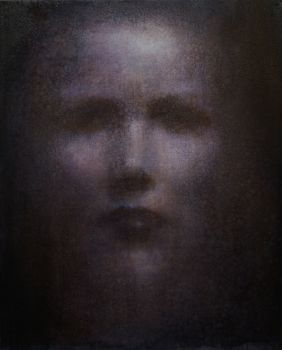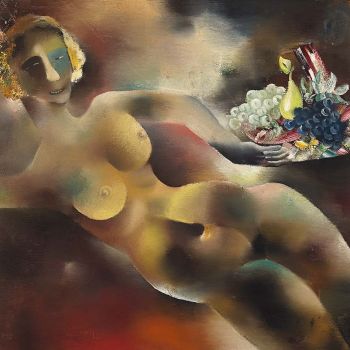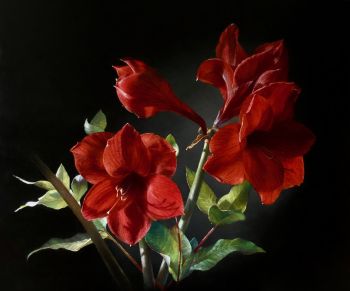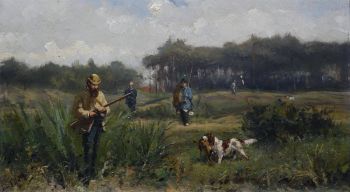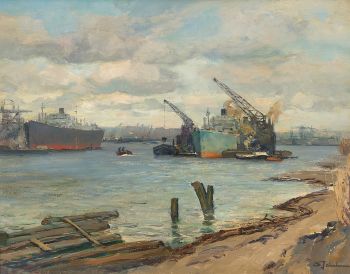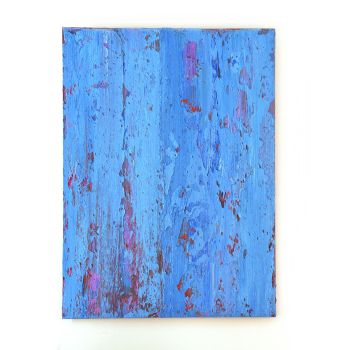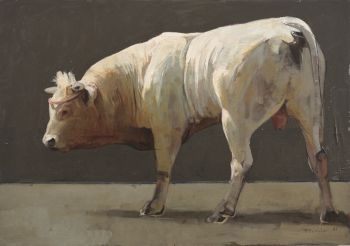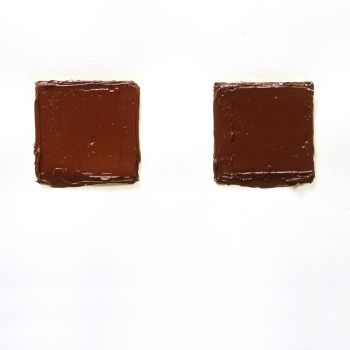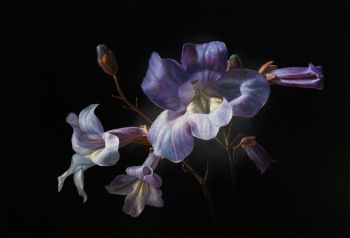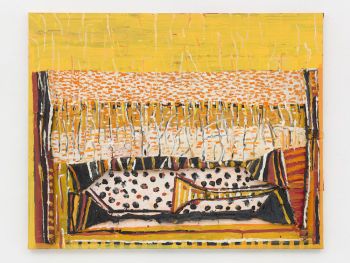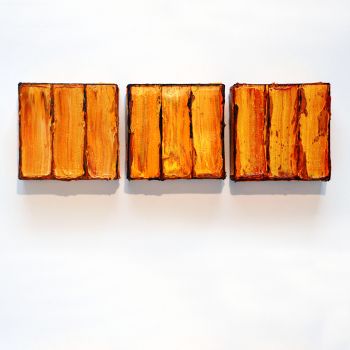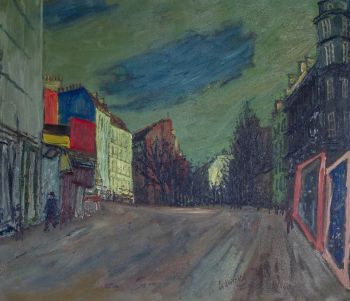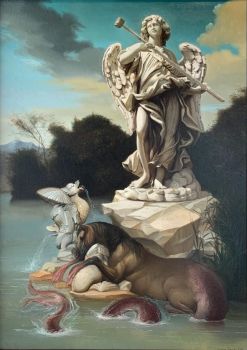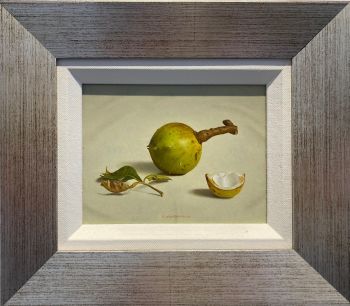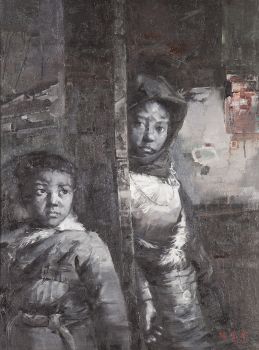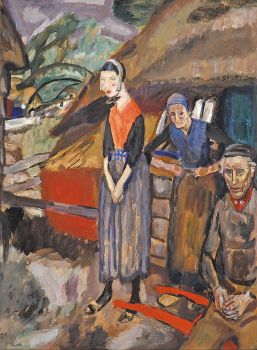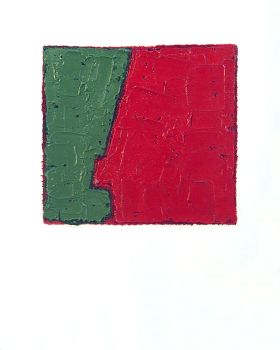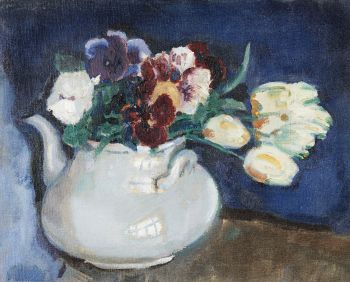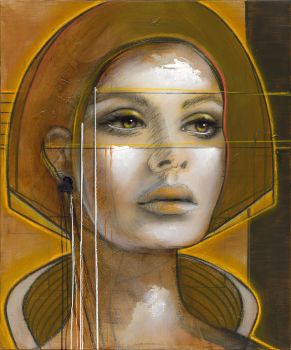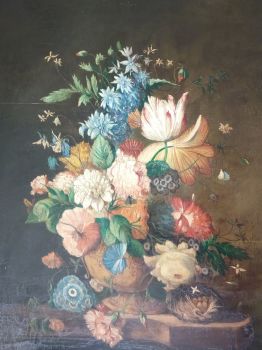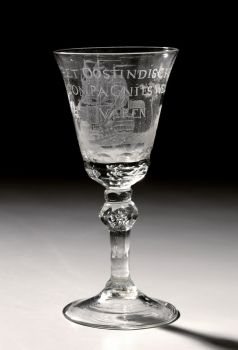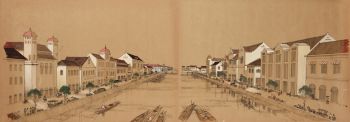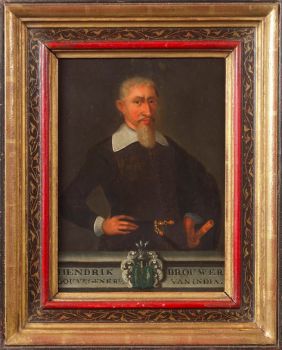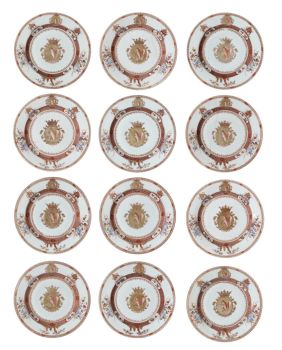Portrait d'un punjabi en Inde britannique 1898
Hubert Vos
ToilePeinture à l'huilePeindre
74 ⨯ 59 cm
ConditionExcellent
Prix sur demande
Zebregs & Röell - Fine Art - Antiques
- Sur l'oeuvre d'artSigned, Hubert Vos
Oil on canvas
Dimensions 74 cm by 59 cm
Hubert Vos was a true cosmopolitan, born in Maastricht he studied in Brussels, Rome and Paris, where he won a gold medal at the Paris Salon in 1886 and 1890. In 1887 he moved to London where he founded the society of British Portrait Painters and the Society of Pastellists together with his friend, the American-born and British-based painter, James McNeill Whistler.
In 1892 the Dutch Government appointed him as its commissioner at the World Exhibition in Chicago. There he became interested as an artist in the various racial types he met. He painted portraits of American Indians and people from Hawaii. Around the turn of the century he moved on to the Far East where he painted such high-placed persons as Prince Ching, Premier of China and uncle of the young Emperor, Yuan Shi Kai, the Javanese Sultan of Djokjakarta, the Emperor and the Crown Prince of Korea. But the most remarkable event of his life was the invitation he received in 1905 from the Dowager Empress of China, Tzu Hsi, to paint her portrait in her summer palace in Peking. Never before had a man been admitted there. The Empress, seventy two years old, told him she wanted a perfect likeness but that she must appear no more than forty years of age.
The result, a life-sized picture of the majestic, energetic woman, adorned with all the necessary imperial attributes was to her satisfaction and Vos was made commander of the Double Dragon and a mandarin. Tzu Hsi died in 1908 and with her over thousands of years of imperial rule over China. What Charles Cordier was for sculpture Vos was for painting; an ethnographic artist.
Vos made copies of all his portraits for his own collection.
The present portrait was a copy of a portrait exhibited in “Rulers of the East” in Holland House, 10 Rockefeller Plaza, New York, November 30, 1944.
Provenance: the artist’s collection and by descent to his grandson Hubert D. Vos - Sur l'artisteHubert Vos est né le 15 février 1855. C'est un peintre néerlandais qui est né à Maastricht. Il a étudié à l'Académie Royale des Beaux-Arts de Bruxelles et avec Fernand Cormon à Paris. Il a beaucoup exposé à Paris, Amsterdam, Bruxelles, Dresde et Munich. De 1885 à 1892, il travaille en Angleterre, où il expose à la Royal Academy entre 1888 et 1891. Il était membre de la Royal Society of British Artists. Sa seconde épouse était Eleanor Kaikilani Coney, d'origine hawaïenne, chinoise et américaine. En 1898, il se rend à Hawaï, où il peint la population locale. La même année, Vos se rend en Corée, où il réalise au moins trois peintures en double. Dans chaque cas, il a laissé une copie en Corée et en a conservé une autre. Ces tableaux sont un portrait grandeur nature de l'empereur Gojong, un portrait de Min Sangho (1870-1933) et un paysage de Séoul. Les copies laissées en Corée ont été accrochées au palais Deoksugung jusqu'à ce que toutes, à l'exception du paysage de Séoul, soient détruites par un incendie en 1904. Vos s'est rendu en Chine en 1899 et a peint des portraits de dirigeants éminents. L'impératrice douairière Cixi (Tzu Hsi), dont le portrait avait été peint à l'huile par l'artiste américaine Katharine Carl, a vu ces portraits et a invité Vos à visiter la Chine en 1905. Il réalisa un portrait d'elle qui est toujours exposé au Palais d'été, puis, de retour à New York, il termina un autre portrait qu'il avait commencé en Chine, qui fut exposé au Salon de Paris, puis acquis par Grenville L. Winthrop et donné au Fogg Museum de Harvard. Outre les portraits et les paysages, Vos est connu pour ses scènes d'intérieur et ses natures mortes en porcelaine chinoise. Les cadeaux de l'impératrice douairière Cixi sont les objets préférés des peintures de natures mortes. Il est décédé à New York en 1935. Le musée du Louvre (Paris, France), le musée Bonnefanten (Maastricht, Pays-Bas), le musée d'histoire de Chicago, le Fogg Art Museum (université de Harvard), le musée d'art d'Honolulu, le palais du Luxembourg (Paris), le Metropolitan Museum of Art et le Smithsonian American Art Museum font partie des collections publiques qui possèdent des œuvres d'Hubert Vos. Hubert Vos est décédé en 1935.
Êtes-vous intéressé par l'achat de cette oeuvre?
Artwork details
Catégorie
Sujet
Style
Matériel & technique
Couleur
Related artworks
Artiste Inconnu
A silver spoon commemorating Juff’ Margareta van Hoorn1656 - 1694
Prix sur demandeZebregs & Röell - Fine Art - Antiques
Artiste Inconnu
A Dutch colonial Indonesian betel box with gold mounts1750 - 1800
Prix sur demandeZebregs & Röell - Fine Art - Antiques
Paulus Franciscus Kromjong
Fleurs devant Arearea Aka (joie) par Gauguin '20th century
Prix sur demandeZebregs & Röell - Fine Art - Antiques
Artiste Inconnu
UN PLAT EN ARGENT LOBBED INDONÉSIEN INSOLITElate 17th
Prix sur demandeZebregs & Röell - Fine Art - Antiques
Artiste Inconnu
Japanese transition-style lacquer coffer 1640 - 1650
Prix sur demandeZebregs & Röell - Fine Art - Antiques
1 - 4 / 24Corstiaan Hendrikus de Swart
Mountain landscape with Lake1838 - 1900
Prix sur demandeKunsthandel Pygmalion
Carel Nicolaas Storm van 's Gravesande
My studio in Bruxelles1841 - 1924
Prix sur demandeKunsthandel Pygmalion
1 - 4 / 24- 1 - 4 / 24
Rene Rietmeyer
"Germany, Saarland, April 2001"2001
Prix sur demandeEuropean Cultural Centre Collection
Rene Rietmeyer
"BUDAPEST, HUNGARY, MARCH 2005"2005
Prix sur demandeEuropean Cultural Centre Collection
Johannes van Dreght
Antique Dutch still life flowers in vase1740 - 1800
Prix sur demandeGallerease Selected
1 - 4 / 24Artiste Inconnu
A large Japanese Imari porcelain 'VOC Groningen' dish1800 - 1925
Prix sur demandeZebregs & Röell - Fine Art - Antiques
Artiste Inconnu
UN RARE GRAND TÉLESCOPE EN CUIR LAQUÉ JAPONAIS1750 - 1800
Prix sur demandeZebregs & Röell - Fine Art - Antiques
1 - 4 / 12


























